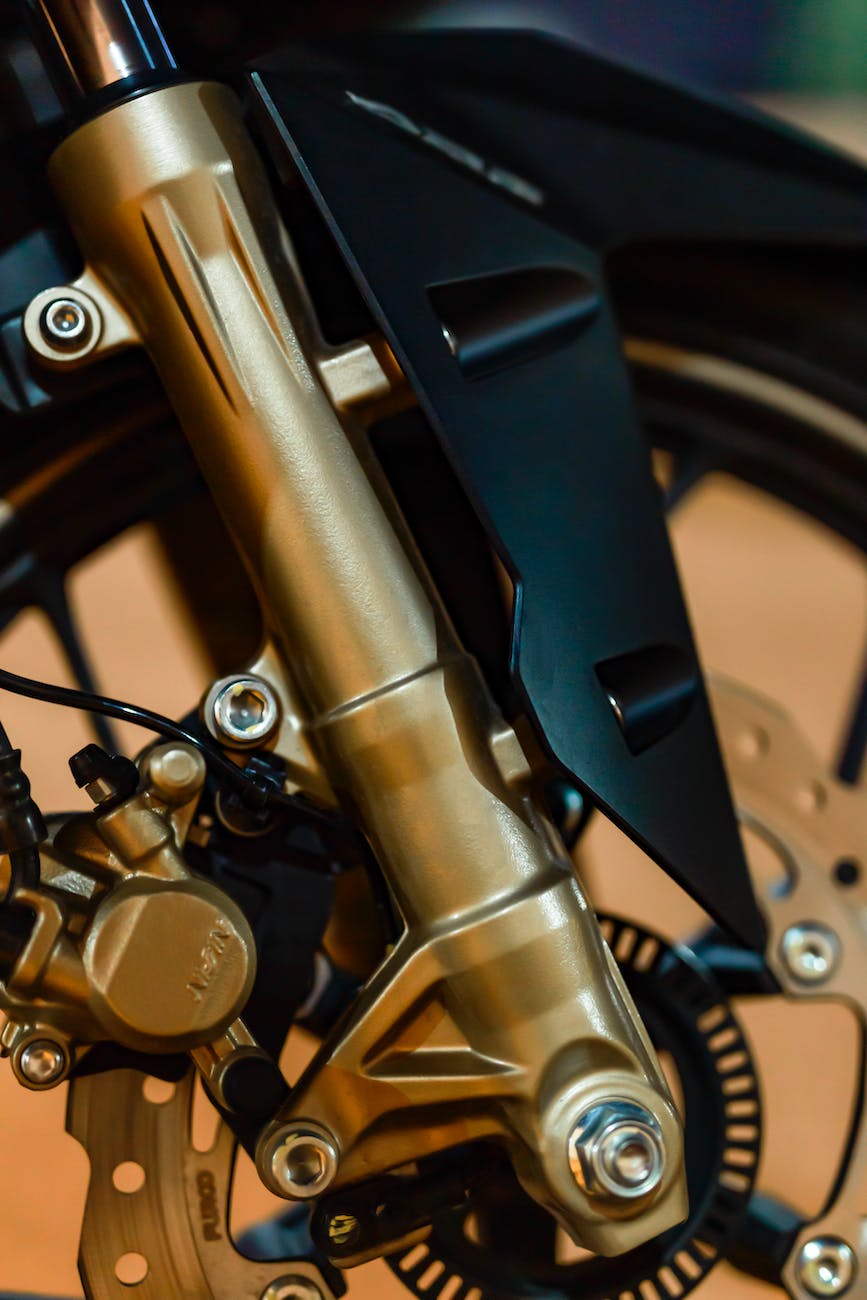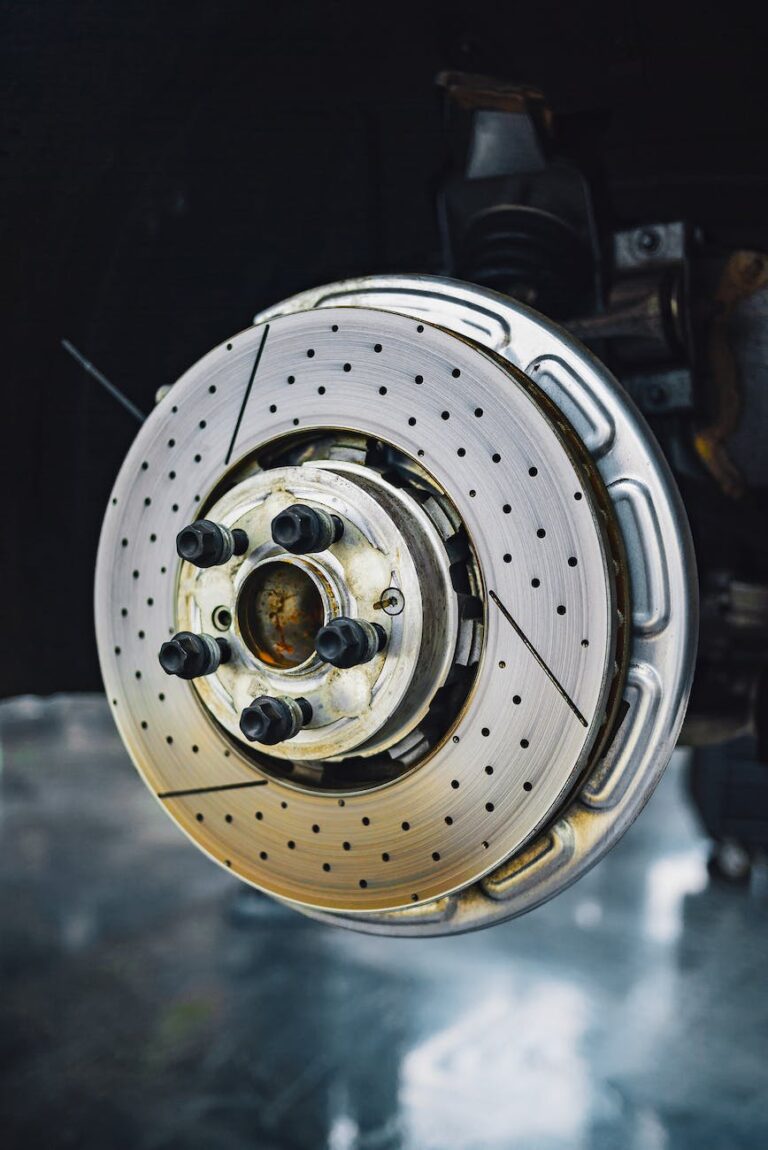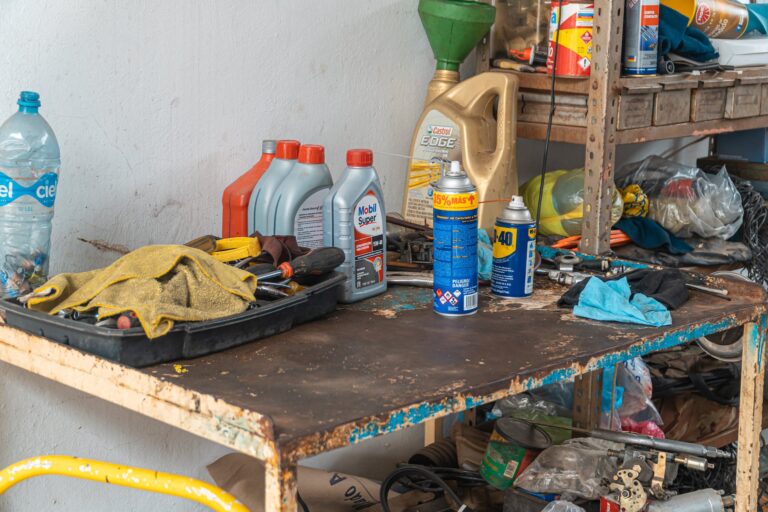Understanding Brake Caliper Repair
Brake caliper repair is an essential aspect of brake service and maintenance, playing a crucial role in ensuring proper braking performance and the safety of your vehicle. Regular maintenance of brake calipers helps to prevent potential issues and ensures that your brakes are operating at their best. Let’s explore the importance of brake caliper maintenance and the signs that indicate potential brake caliper problems.
Importance of Brake Caliper Maintenance
Maintaining your brake calipers is vital to ensure optimal braking performance and safety on the road. Brake calipers are responsible for applying pressure to the brake pads, which then press against the rotors to slow down or stop the vehicle. Over time, brake calipers can develop issues such as stuck pistons, worn seals, or corrosion. These problems can lead to reduced braking efficiency, uneven brake pad wear, and even brake system failure.
Regular brake caliper maintenance helps to identify and address these issues promptly, preventing more severe problems from occurring. By keeping your brake calipers in good condition, you can ensure consistent and reliable braking performance, providing you with peace of mind while driving.
Signs of Brake Caliper Problems
Recognizing the signs of brake caliper problems is crucial for early detection and prompt repair. Some common indicators of brake caliper issues include:
- Uneven Braking: If you notice that your vehicle pulls to one side when braking, it may be a sign of a stuck brake caliper. A stuck caliper can cause uneven pressure distribution on the brake pads, leading to uneven braking performance.
- Squeaking or Grinding Noises: Unusual noises, such as squeaking or grinding sounds, while applying the brakes can indicate problems with the calipers. These noises may occur due to worn-out brake pads or caliper issues that require attention.
- Leaking Brake Fluid: Brake fluid leaks around the caliper area can be a sign of a damaged caliper piston seal. Brake fluid leaks should be addressed immediately, as they can compromise the brake system’s integrity and reduce braking effectiveness.
If you notice any of these signs, it is essential to have your brake calipers inspected and repaired by a professional mechanic or technician. They have the necessary expertise and tools to diagnose and resolve brake caliper issues effectively and safely. Delaying brake caliper repair can lead to further damage to your vehicle’s braking system and compromise your safety on the road.
In the next sections, we will explore temporary fixes for stuck brake calipers and the importance of professional brake caliper repair. Stay tuned to learn more about maintaining your brake calipers and maximizing their lifespan. Remember, for any brake service or repair needs, it is recommended to consult a professional mechanic or visit a trusted brake repair shop.
Temporary Fixes for Stuck Brake Calipers
If you’re experiencing a stuck brake caliper, there are a couple of temporary fixes that you can try to alleviate the issue. However, it’s important to note that these fixes should only be considered temporary solutions, and it is crucial to schedule a professional brake caliper repair as soon as possible to prevent further damage to your vehicle.
Tapping the Caliper
One possible temporary fix for a stuck brake caliper is to tap the caliper with a hammer. This can help to free up any debris or corrosion that may be causing the caliper to stick. When tapping the caliper, be sure to use a rubber mallet or place a piece of wood between the hammer and the caliper to avoid damaging the caliper or other brake components.
It’s important to remember that tapping the caliper is not a permanent solution and should only be used to get you to a professional repair shop. Continuing to drive with a stuck caliper can lead to uneven brake pad wear and compromised braking performance.
Using Lubricant
Another temporary fix for a stuck brake caliper is to use a lubricant such as WD-40. Applying lubricant to the caliper slides and other moving parts can help to loosen up the caliper and improve its movement. Spray the lubricant generously on the affected areas and give it some time to penetrate before attempting to move the caliper.
While using a lubricant can provide temporary relief, it is important to remember that it is not a long-term solution. The caliper should still be inspected and repaired by a professional mechanic to address the underlying issue.
If you notice that your vehicle is pulling to one side when braking, it may be an indication of a stuck brake caliper (Heart Auto Care). In such cases, it is recommended to consult a professional mechanic who has the expertise and tools to properly diagnose and repair the issue.
Remember, temporary fixes are not a substitute for proper brake caliper repair. To ensure your safety and the optimal performance of your braking system, it is always best to have a professional mechanic inspect and repair your brake calipers promptly.
In the next section, we will explore the various tools used in brake caliper repair, as well as the options for replacing brake pads and rotors or rebuilding versus replacing the brake calipers.
Professional Brake Caliper Repair
When it comes to brake caliper repair, it’s often best to leave the job to a professional. They have the expertise and the necessary tools to ensure a thorough and effective repair. Let’s explore the tools used in brake caliper repair, the process of replacing brake pads and rotors, and the considerations when deciding between rebuilding or replacing brake calipers.
Tools Used in Brake Caliper Repair
Brake caliper repair requires specialized tools to properly disassemble, inspect, and reassemble the caliper. Some of the commonly used tools include:
-
Brake caliper piston tool: This tool helps compress the caliper piston back into its housing when replacing brake pads. It ensures that the piston is properly aligned, allowing for smooth brake operation.
-
Brake caliper wind back tool: Similar to the piston tool, the wind back tool helps rotate the caliper piston while compressing it. This tool is often used for calipers with integrated parking brakes.
-
Brake caliper hanger: This tool is used to suspend the caliper during brake pad replacement, preventing unnecessary strain on the brake hose.
These tools, along with others specific to different caliper designs, allow mechanics to perform precise and efficient brake caliper repairs. It’s important to consult a professional brake repair shop, such as brake services near me, to ensure that the repair is done properly.
Replacing Brake Pads and Rotors
During brake caliper repair, it’s common to replace worn-out brake pads and rotors. This process involves the following steps:
-
Removing the caliper: The caliper is detached from the brake rotor, allowing access to the brake pads.
-
Inspecting the brake pads and rotors: The mechanic examines the brake pads and rotors for wear, damage, or uneven surfaces. If necessary, they will recommend replacements.
-
Installing new brake pads and rotors: High-quality brake pads and rotors are carefully fitted into place, ensuring proper alignment and secure attachment.
-
Caliper reinstallation: Once the new brake pads and rotors are in place, the caliper is reattached to the rotor, securing it with bolts or pins.
Replacing brake pads and rotors is a critical aspect of brake caliper repair. It improves braking performance, reduces noise, and ensures the safety of the vehicle and its occupants. For more information on brake pad replacement, visit our article on brake pads replacement.
Rebuilding vs. Replacing Brake Calipers
When addressing brake caliper problems, mechanics may need to decide between rebuilding or replacing the entire caliper assembly. Here are some considerations for each option:
Rebuilding Brake Calipers
Rebuilding brake calipers involves disassembling the caliper, cleaning it, inspecting the components, replacing any worn or damaged parts, and reassembling it (Counterman). This option can be cost-effective and environmentally friendly, as it reduces waste. Brake caliper rebuild kits, which provide all the necessary components, are available in the market, making the process more convenient (Counterman).
It’s important to note that rebuilding a brake caliper requires proper knowledge and skills. If you’re considering this option, it’s advisable to consult a professional mechanic or follow a detailed guide to ensure a successful repair.
Replacing Brake Calipers
In some cases, particularly when significant damage or wear is present, it may be more practical to replace the entire brake caliper assembly. This ensures that all components are in optimal condition and eliminates the risk of hidden issues.
When replacing brake calipers, it’s essential to use vehicle-specific calipers to maintain compatibility and performance. High-quality replacements, such as those offered by Goodyear Brakes, can provide reliability and peace of mind. To learn more about quality brake products, explore our article on Goodyear Brakes: Quality Brake Products.
By entrusting your brake caliper repair to a professional, you can have confidence in the quality of the repair and the safety of your vehicle. Whether it involves replacing brake pads and rotors or deciding between rebuilding or replacing the calipers, professional brake caliper repair ensures reliable and efficient braking performance.
Addressing Brake Caliper Issues Promptly
When it comes to brake caliper problems, addressing them promptly is crucial for ensuring your safety on the road. Ignoring brake caliper issues can have serious consequences and affect your vehicle’s braking performance. It’s important to be aware of the risks and consult a professional mechanic for proper repair.
Risks of Ignoring Brake Caliper Problems
A stuck brake caliper can cause uneven brake pad wear and reduced braking performance, which can be dangerous (Heart Auto Care). If left unattended, a malfunctioning caliper can lead to further damage to the brake system components, including the brake rotor and pads. This can result in costly repairs and compromise your safety on the road.
Additionally, a faulty brake caliper can affect the overall balance and control of your vehicle during braking. It may cause the vehicle to pull to one side or result in a vibrating brake pedal. These issues can make it more difficult to maintain control of your vehicle and increase the risk of accidents.
Consulting a Professional Mechanic
When faced with brake caliper problems, it is recommended to consult a professional mechanic to inspect and repair the issue. They have the expertise and specialized tools to properly diagnose and fix brake caliper problems (Heart Auto Care). A professional mechanic will be able to accurately identify the root cause of the problem and provide the necessary repairs or replacements.
Attempting to repair brake calipers without proper knowledge and tools can lead to further damage and compromise the safety of your vehicle. It’s best to leave brake caliper repairs to the experts who have the training and experience to handle such tasks effectively.
By promptly addressing brake caliper issues and seeking professional assistance when necessary, you can ensure the optimal functioning of your braking system and maintain your safety on the road. Regular maintenance and inspections of your brake system can also help identify potential issues before they escalate. Remember, your brakes are a critical component of your vehicle, and any problems should be addressed without delay.
Proper Maintenance for Brake Calipers
To ensure optimal performance and longevity of your brake calipers, proper maintenance is essential. This section will cover two crucial aspects of brake caliper maintenance: cleaning and lubricating brake calipers, and rust prevention and inspection.
Cleaning and Lubricating Brake Calipers
Regularly cleaning and lubricating your brake calipers can help prevent issues such as sticking or seizing. Here are the steps to effectively clean and lubricate your brake calipers:
- Start by lifting the vehicle and securely supporting it on jack stands.
- Remove the wheels to gain access to the brake calipers.
- Use a brake cleaner spray to remove any dirt, grime, and brake dust from the calipers. Be sure to wear gloves and eye protection when using the brake cleaner.
- Inspect the calipers for any signs of damage, such as leaks or corrosion. If you notice any significant damage, it may be necessary to consult a professional mechanic for further evaluation.
- Once the calipers are clean and dry, apply a thin layer of high-temperature brake caliper grease to the contact points, slide pins, and any other moving parts. This will help reduce friction and ensure smooth operation.
- Avoid getting grease on the brake pads or rotors, as this can negatively affect braking performance. If any grease accidentally gets on these components, use brake cleaner to remove it.
Regularly cleaning and lubricating your brake calipers can help maintain their functionality and prevent premature wear. By reducing friction and ensuring smooth movement, you can prolong the lifespan of your brake calipers and enhance your overall braking performance.
Rust Prevention and Inspection
Rust is a common issue that can affect brake calipers, especially in areas with high humidity or harsh winter conditions. Rust can compromise the integrity of the calipers and lead to brake system failures. To prevent rust and ensure the longevity of your brake calipers, follow these steps:
- Regularly inspect the brake calipers for any signs of rust or corrosion. Pay close attention to the areas around the pistons, slide pins, and mounting brackets.
- If you notice any rust, use a wire brush or sandpaper to remove the rust buildup. Be gentle to avoid damaging the caliper surface.
- After removing the rust, apply a rust prevention spray or paint specifically designed for brake calipers. This will help protect the calipers from future corrosion.
- Inspect the dust covers that protect the caliper piston seals. Any damage to these covers can increase the risk of corrosion or seal failure. If you notice any tears or cracks, consider replacing the dust covers to prevent moisture from entering the caliper assembly.
Regular inspection and rust prevention measures are crucial for maintaining the integrity and functionality of your brake calipers. By addressing rust issues promptly and taking preventive measures, you can extend the lifespan of your calipers and ensure reliable braking performance.
Remember, if you encounter any significant brake caliper problems or are unsure about performing maintenance yourself, it’s always recommended to consult a professional mechanic. They have the expertise and knowledge to properly diagnose and address any brake caliper issues you may be experiencing.
Goodyear Brakes offers premium brake bundles and components, including high-quality brake pads and calipers. Their brake pads are manufactured in the USA using a proprietary green production process, providing you with reliable and eco-friendly braking solutions. Learn more about the benefits of Goodyear Brake Pads here.
The Role of Brake Calipers in Braking Performance
Brake calipers play a crucial role in the overall braking performance of a vehicle. They are responsible for applying pressure to the brake pads, which then press against the brake rotors, resulting in the deceleration and stopping of the vehicle. In this section, we will explore the impact of brake calipers on brake pad wear and the symptoms of a bad brake caliper.
Impact on Brake Pad Wear
A properly functioning brake caliper is essential for even wear of the brake pads. When the caliper applies pressure to the brake pads, they come into contact with the brake rotors, generating friction that slows down the vehicle. However, if a brake caliper is malfunctioning or sticking, it can cause uneven brake pad wear. This uneven wear can lead to decreased braking performance and increased stopping distances, posing a safety risk on the road (BreakerLink).
To ensure optimal brake pad wear, it is important to address any issues with the brake calipers promptly. Regular brake service and maintenance, including inspecting and lubricating the calipers, can help prevent uneven wear and extend the lifespan of the brake pads. To find a reliable brake service near you, check out our article on brake service near me.
Symptoms of a Bad Brake Caliper
Recognizing the signs of a bad brake caliper is essential for maintaining your vehicle’s braking system. Some common symptoms of a bad brake caliper include:
- Uneven braking: If you notice that your vehicle pulls to one side when braking, it could be an indication of a sticking or malfunctioning brake caliper. A faulty caliper may not apply even pressure to both brake pads, resulting in uneven braking performance.
- Squealing or grinding noise: A damaged or sticking brake caliper can cause the brake pads to wear unevenly or make contact with the rotor improperly. This can lead to squealing or grinding noises when braking. If you experience unusual brake noise, it’s important to have your calipers inspected and repaired by a professional brake mechanic.
- Reduced braking efficiency: A failing brake caliper can decrease the overall braking power of your vehicle. If you notice that it takes longer to stop or that your braking distance has increased, it’s crucial to have your brake system inspected, including the calipers.
If you suspect any issues with your brake calipers, it is recommended to consult a professional mechanic for an accurate diagnosis and proper brake caliper repair. Delaying repairs can lead to further damage to the braking system and potentially compromise your safety on the road. For more information on brake repair and maintenance, visit our article on brake repair.
Understanding the role of brake calipers in braking performance, as well as recognizing the signs of a bad brake caliper, can help you make informed decisions about maintaining and repairing your vehicle’s braking system. Regular brake inspections, along with prompt attention to any caliper issues, will ensure that your brakes perform optimally, providing reliable stopping power when you need it most.
Brake Calipers: Durability and Failure
Brake calipers are a critical component of the braking system in vehicles, responsible for applying pressure to the brake pads, which then press against the brake rotors to slow or stop the vehicle. While brake calipers are generally designed to be tough and durable, they can still experience failures or damage due to various factors.
Factors That Cause Brake Calipers to Fail
Several factors can contribute to the failure of brake calipers. One of the main causes is the harsh environment in which calipers operate. Calipers are constantly exposed to dirt, rocks, debris, and extreme heat generated when the brake pads contact the brake rotors. Over time, these factors can take a toll on the calipers, leading to corrosion, seal failure, or other forms of damage (Goodyear Brakes).
Regular maintenance of other brake components, such as brake pads and rotors, is crucial to prevent excessive wear and tear on the calipers. If the brake pads become worn and the friction material is completely depleted, the metal backing plate can come into direct contact with the brake rotor, causing damage to both the rotor and the caliper. It is essential to address worn brake pads promptly to avoid potential caliper failures.
Importance of Vehicle-Specific Calipers
Brake calipers are not universal; they are specifically manufactured for certain vehicle models, trim levels, and years. It is crucial to use vehicle-specific calipers when performing brake caliper repairs or replacements. Using the wrong caliper that is not designed for a particular vehicle can result in improper fitment, compromised braking performance, and potential safety risks (Goodyear Brakes).
Vehicle-specific calipers ensure proper alignment and operation, as they are engineered to fit the specific brake system of the vehicle. They are designed with the correct piston size, mounting brackets, and hydraulic connections to ensure optimal braking performance. When replacing brake calipers, it is essential to use the appropriate calipers for your specific vehicle to ensure the safety and reliability of the braking system.
To maintain the durability and functionality of brake calipers, regular maintenance of brake pads and rotors is necessary, while direct maintenance of calipers is not generally required. However, thorough inspection, cleaning, and lubrication of calipers are recommended when replacing brake pads and rotors. This helps to ensure smooth operation and extend the lifespan of the calipers. For premium brake bundles, calipers, rotors, and brake pads, backed by a national warranty and produced with a proprietary green manufacturing process, consider Goodyear Brakes.
By understanding the factors that can cause brake calipers to fail and the importance of using vehicle-specific calipers, car owners can make informed decisions when it comes to brake caliper repair and replacement, ensuring optimal braking performance and safety on the road.
Goodyear Brakes: Quality Brake Products
When it comes to brake caliper repair, it’s crucial to choose reliable and high-quality brake components. Goodyear Brakes, a trusted name in the automotive industry, offers premium brake bundles and components that are designed to deliver exceptional performance and durability. Let’s explore the benefits of Goodyear brake pads and their commitment to quality.
Premium Brake Bundles and Components
Goodyear Brakes manufactures a wide range of premium quality brake bundles and components, including calipers, rotors, and brake pads. These bundles are designed to provide a comprehensive solution for your braking needs. By combining key brake components, Goodyear ensures that all parts work together harmoniously, optimizing braking performance and safety.
One of the standout features of Goodyear brake bundles is their national warranty. This warranty provides car owners with peace of mind, knowing that their brakes are protected against defects and premature wear. With Goodyear Brakes, you can trust that your vehicle’s braking system is backed by a company with decades of experience in brake production.
Benefits of Goodyear Brake Pads
Goodyear brake pads are a standout component of their brake bundles. Manufactured in the USA, these brake pads undergo a proprietary green production process that prioritizes both performance and environmental sustainability. This process ensures that the brake pads meet the highest quality standards while minimizing their impact on the environment.
The use of advanced friction materials in Goodyear brake pads allows for enhanced stopping power and reduced braking distances. These brake pads are engineered to provide consistent and reliable performance, even in demanding driving conditions. Whether you’re navigating city streets or tackling winding mountain roads, Goodyear brake pads deliver the confidence you need to stop safely.
Additionally, Goodyear brake pads are compatible with a wide range of vehicles, making them a versatile choice for car owners. They offer excellent fit and function, ensuring optimal brake performance and compatibility with your specific vehicle model.
By choosing Goodyear Brakes, you can trust that you’re investing in quality brake products that prioritize performance, reliability, and environmental responsibility. Whether you’re in need of brake caliper repair or a complete brake system overhaul, Goodyear Brakes offers the components and expertise to meet your needs.
Don’t compromise on the safety and performance of your vehicle’s braking system. Explore the brake services available, such as brake service near me, brake repair, and brake replacement, and consider the quality and reliability of Goodyear Brakes. Your safety and peace of mind are worth it.
Professional Brake Caliper Repair
When it comes to brake caliper repair, it is important to entrust the task to a professional mechanic or technician who has the proper tools and expertise to ensure the job is done correctly and safely. Brake caliper repair is an essential part of brake service and maintenance to ensure proper braking performance and the safety of the vehicle. In this section, we will explore the tools used in brake caliper repair and discuss the options for replacing or rebuilding brake calipers.
Tools Used in Brake Caliper Repair
Brake caliper repair requires specialized tools that enable mechanics to effectively and safely service the calipers. Some of the tools commonly used in brake caliper repair include:
-
Brake Caliper Piston Tool: This tool is used to compress the caliper piston back into its housing when replacing brake pads or performing other maintenance tasks. It allows for proper alignment and positioning of the piston, ensuring smooth operation of the brake system.
-
Brake Caliper Wind Back Tool: This tool is specifically designed to rotate and retract the caliper piston on vehicles with a threaded piston design. It simplifies the process of pushing the piston back into the caliper, making brake pad replacement easier and more efficient.
-
Brake Caliper Hanger: A brake caliper hanger is used to support the caliper and prevent it from hanging by the brake hose during brake service. It helps avoid damage to the brake hose and ensures proper positioning of the caliper for smooth reinstallation.
By utilizing these specialized tools, professional mechanics can safely and effectively perform brake caliper repair, ensuring the longevity and reliability of the braking system.
Replacing Brake Pads and Rotors
During brake caliper repair, it is common to replace brake pads and sometimes brake rotors as well. Worn-out brake pads and damaged rotors can significantly impact braking performance and compromise safety. By replacing these components as part of the caliper repair process, mechanics ensure optimal braking performance and restore the vehicle’s ability to stop effectively.
Rebuilding vs. Replacing Brake Calipers
When it comes to brake caliper repair, there is the option to either rebuild or replace the calipers. Rebuilding brake calipers involves disassembling the caliper, cleaning it, inspecting the components, replacing any worn or damaged parts, and reassembling it. This process can be cost-effective and environmentally friendly, as it avoids the need to manufacture new calipers. However, it requires proper knowledge and skills to ensure the caliper is rebuilt correctly.
On the other hand, replacing brake calipers involves removing the old calipers and installing new ones. This option is often chosen when the caliper is severely damaged or the cost of rebuilding exceeds the cost of replacement. Vehicle owners should consider factors such as the extent of damage, availability of parts, cost-effectiveness, and time constraints when deciding whether to rebuild or replace brake calipers.
To make an informed decision, it is recommended to consult a professional mechanic who can assess the condition of the calipers and provide expert advice on the best course of action.
In the next section, we will discuss the importance of addressing brake caliper issues promptly and the risks of ignoring these problems. Stay tuned!
Sources:







